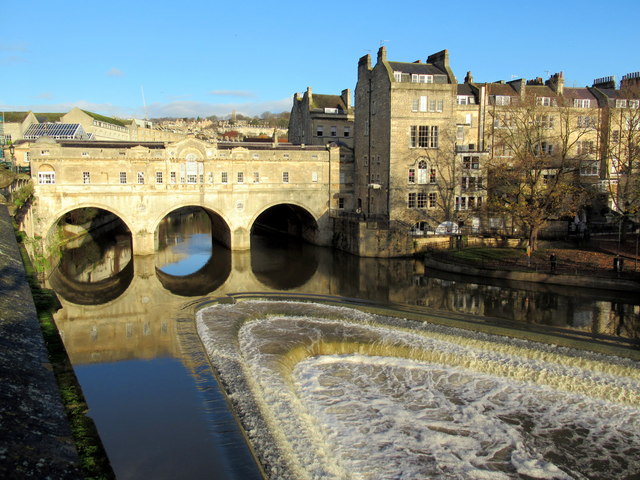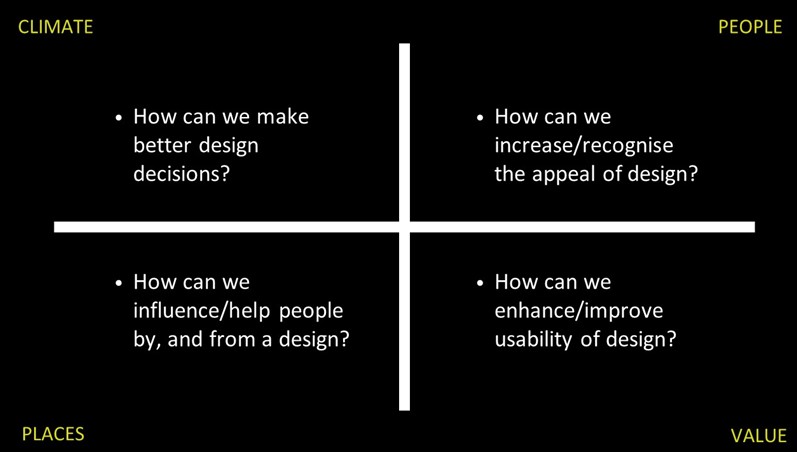What makes good design?
Pulteney Bridge and Weir, Bath
Contents |
[edit] Introduction
On 8 September 2020, ICE presented an online Strategy Session, “What makes good design?”
Paul Sheffield, ICE President, chaired the session, opening with a brief overview that touched on the importance of design literacy and its relationship to infrastructure. He then acknowledged the connection between functionality and appearance, saying, “when something is visible, it should look good too.”
[edit] National Infrastructure Commission (NIC)
Sheffield went on to explain the ideology behind the National Infrastructure Commission (NIC) and its design group, which has worked with ICE to develop design principles for national infrastructure. The goal of the collaboration is to seek better outcomes for climate, people, places and value in the planning and delivery of major projects.
Professor Sadie Morgan OBE, director of dRMM, discussed the origins of the NIC and reviewed its assessment published in 2018. This included an overview of the National Infrastructure Strategy, which “put good design at the heart of tomorrow’s infrastructure”. She also suggested design panels could play important part in meeting the goals for good infrastructure design.
[edit] Lessons for new infrastructure and renewal
Judith Sykes from Expedition Engineering spoke about the drivers of, and barriers to, successful infrastructure planning and delivery, suggesting the right environment is necessary for good design.
Sykes explained the differences between I-shaped and T-shaped infrastructure engineering. She stressed the importance of having a broader understanding of the different aspects that are part of well designed infrastructure. She also acknowledged the reality and necessity of an iterative process that includes subprocesses and feedback based on multiple objectives.
Her remarks emphasised the significance of a good design brief. She felt the brief should include consultations with key stakeholders, including technology providers, the supply chain and the wider community - both regional and local. Sykes also talked about the review of the Treasury Green Book and the growing influence of SMEs - particularly in relation to innovation.
[edit] Innovation and environment
Andrew Grant focussed on context, examining the role of landscape and “creative ecology”. As a landscape architect, Grant placed climate at the top of the priority list for infrastructure, but acknowledged that what might be seen as a benefit to some may be quite the opposite to others. Grant suggested asking the question, “does it add value as social and environmental infrastructure”?
Like Sykes, Grant talked about gathering the right people on the design team. He explained that they “must understand the synthesis of the project and nature,” saying “the world is your context”.
Grant illustrated this with a brief discussion of one unsuccessful example - 5G mobile phone towers (said to look like sinister, fake trees) and three successful examples:
- Megget Reservoir, Scottish Borders.
- Pulteney Bridge and Weir, Bath (pictured above).
- Grey to Green city centre project, Sheffield.
[edit] Transforming transport
The rail sector was reviewed by Anthony Dewar, Professional Head of Buildings & Architecture for Network Rail. With approximately 2,500 stations across the country, Network Rail deals with grand facilities such as St Pancras station in London and small facilities like the remote station - only accessible by rail, foot or boat - in Berney Arms.
In 2018, Network Rail came up with 9 Principles of Good Design, which has since been included as part of the standards and engineering process for all Network Rail developments. Other strategies include design competitions (such as the 2019 Footbridge Design Ideas competition) and digital tools such as augmented reality.
[edit] Climate-People-Places-Value
The final speaker, Professor Hanif Kara of AKTII, provided an in-depth examination of ‘good’ design by returning to the concepts introduced by Morgan as the framework for NIC’s design group. Kara saw “design as an agent of change to make a positive difference,” and described a series of examples and explanations of the Climate-People-Places-Value concept.
[edit] Conclusions
Explaining that money is not the only way to create value, Kara spoke of the opportunity to design a better world. This objective should be sought from the beginning, said Sykes, despite the pressures that many organisations experience. She also recognised that good design could be seen as subjective.
Dewar recognised the need for societal change and stressed educational and cultural developments that might help make a difference in terms of recognising good design.
When asked what might be the most significant change maker for the future in terms of materials, the responses were mixed. While two speakers came up with definitive predictions (for Kara, it would be data; for Grant, it would be trees), the others felt no single thing stood out and that context would dictate what materials or concepts would become drivers of change in the future.
[edit] Related articles on Designing Buildings Wiki
- Business case for construction projects.
- Design.
- Double diamond design process.
- Infrastructure.
- Institution of Civil Engineers ICE.
- National Infrastructure Commission NIC.
[edit] External resources
Featured articles and news
One of the most impressive Victorian architects. Book review.
RTPI leader to become new CIOB Chief Executive Officer
Dr Victoria Hills MRTPI, FICE to take over after Caroline Gumble’s departure.
Social and affordable housing, a long term plan for delivery
The “Delivering a Decade of Renewal for Social and Affordable Housing” strategy sets out future path.
A change to adoptive architecture
Effects of global weather warming on architectural detailing, material choice and human interaction.
The proposed publicly owned and backed subsidiary of Homes England, to facilitate new homes.
How big is the problem and what can we do to mitigate the effects?
Overheating guidance and tools for building designers
A number of cool guides to help with the heat.
The UK's Modern Industrial Strategy: A 10 year plan
Previous consultation criticism, current key elements and general support with some persisting reservations.
Building Safety Regulator reforms
New roles, new staff and a new fast track service pave the way for a single construction regulator.
Architectural Technologist CPDs and Communications
CIAT CPD… and how you can do it!
Cooling centres and cool spaces
Managing extreme heat in cities by directing the public to places for heat stress relief and water sources.
Winter gardens: A brief history and warm variations
Extending the season with glass in different forms and terms.
Restoring Great Yarmouth's Winter Gardens
Transforming one of the least sustainable constructions imaginable.
Construction Skills Mission Board launch sector drive
Newly formed government and industry collaboration set strategy for recruiting an additional 100,000 construction workers a year.
New Architects Code comes into effect in September 2025
ARB Architects Code of Conduct and Practice available with ongoing consultation regarding guidance.
Welsh Skills Body (Medr) launches ambitious plan
The new skills body brings together funding and regulation of tertiary education and research for the devolved nation.
Paul Gandy FCIOB announced as next CIOB President
Former Tilbury Douglas CEO takes helm.

























